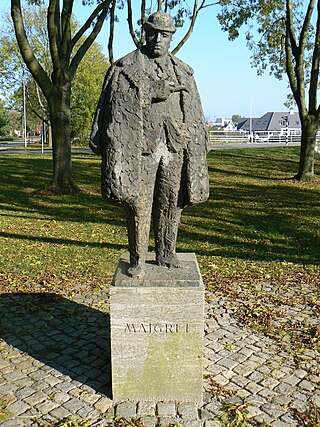
Jules Maigret, or simply Maigret, is a fictional French police detective, a commissaire ("commissioner") of the Paris Brigade Criminelle, created by writer Georges Simenon. The character's full name is Jules Amédée François Maigret.
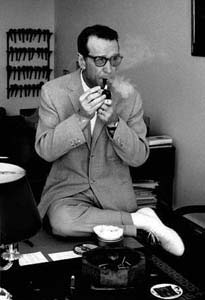
Georges Joseph Christian Simenon was a Belgian writer, most famous for his fictional detective Jules Maigret. One of the most popular authors of the 20th century, he published around 400 novels, 21 volumes of memoirs and many short stories, selling over 500 million copies.
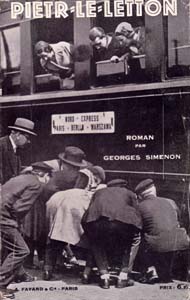
The Strange Case of Peter the Lett is a 1931 detective novel by the Belgian writer Georges Simenon. It is the first novel to feature Inspector Jules Maigret who would later appear in more than a hundred stories by Simenon and who has become a legendary figure in the annals of detective fiction.

Maigret and the Headless Corpse is a detective novel by the Belgian writer Georges Simenon.
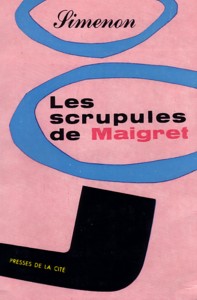
Maigret Has Scruples is a detective novel by the Belgian writer Georges Simenon featuring his character Jules Maigret.

Maigret and the Burglar's Wife is a 1951 detective novel by the Belgian writer Georges Simenon featuring his character Jules Maigret. Maigret is spurred into action by a visit from a burglar's wife, whom he had known well many years before. She informs him that a few nights previously her husband had been in the act of burgling a house when he discovered a dead body on the floor. Horrified, he had fled the scene, and then left the country - writing to his wife by letter. Maigret is inclined to investigate a prominent dentist, who lives with his domineering mother, and has a wife who has apparently "gone away on holiday" - although Maigret knows he can prove nothing unless he can find the body.
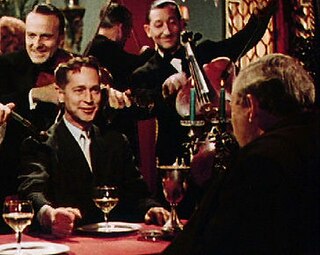
The Man on the Eiffel Tower is a 1950 American Ansco Color film noir mystery film starring Charles Laughton, Franchot Tone, Burgess Meredith, and Robert Hutton. Ultimately directed by Meredith, it is based on the 1931 novel La Tête d'un homme by Belgian writer Georges Simenon featuring his detective Jules Maigret. The film was co-produced by Tone and Irving Allen as A&T Film Productions and released by RKO Radio Pictures. Much of the outdoor action occurs in familiar Paris locales, including the Eiffel Tower, the Seine, and Pigalle.

Night Passage is a crime novel by Robert B. Parker, the first in his Jesse Stone series.

Maigret and the Dosser is a detective novel by the Belgian writer Georges Simenon featuring his character Jules Maigret.

Feux rouges is the title of a short novel by Belgian writer Georges Simenon. It is one of the author's roman durs or "hard novels".

The Bottom of the Bottle is a novel by the Belgian writer Georges Simenon. The original French version Le Fond de la Bouteille, written in 1948 when Simenon was living in Arizona, appeared in 1949. The novel is among his romans durs, a term roughly translated as hard, or harrowing, novels; it was used by Simenon for what he regarded as his serious literary works.

Maigret's Revolver is a novel by the Belgian writer Georges Simenon. The original French version Le Revolver de Maigret appeared in 1952. The theft of Inspector Jules Maigret's revolver from his home begins a detective story that leads to Maigret travelling from Paris to London to find the young man who stole it, and the woman who is in danger of being his victim.

The Crime of Inspector Maigret is a novel by the Belgian writer Georges Simenon. The original French-language version Le Pendu de Saint-Pholien appeared in 1931: it is one of the earliest novels by Simenon featuring the detective Jules Maigret.
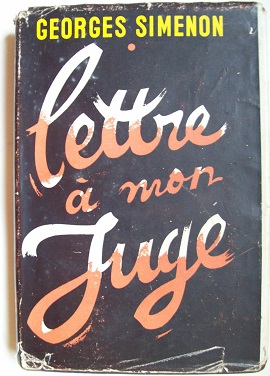
Lettre à mon juge was written by Belgian author Georges Simenon in 1946 during his stay at Bradenton Beach, Florida and published in Paris the following year by Presses de la Cité. It is a dark psychological account of a man overcome by buried passions who becomes a murderer.
Maigret et l'affaire Saint-Fiacre is a 1959 French crime film directed by Jean Delannoy that stars Jean Gabin as the fictional police detective Jules Maigret. Adapted from the novel l'Affaire Saint-Fiacre by the Belgian writer Georges Simenon, it tells how Maigret goes privately to the aid of his late father's employer who has received an anonymous death threat and, though unable to prevent the death, unmasks the plotters.

A Man's Neck is a 1933 French crime film directed by Julien Duvivier and starring Harry Baur, Valéry Inkijinoff, Gaston Jacquet and Gina Manès.It is an adaptation of the 1931 novel A Battle of Nerves by Georges Simenon, featuring the fictional detective Jules Maigret. It was the third film in cinema history to feature the Maigret character. It was remade in 1950 as The Man on the Eiffel Tower.
The Watchmaker of Everton is a novel by the Belgian writer Georges Simenon. The original French version L'horloger d'Everton appeared in 1954. This novel and Red Lights, both translated by Norman Denny, were published together in 1955 by Hamish Hamilton as Danger Ahead.

The Night Club is a novel by the Belgian writer Georges Simenon. The original French version L'Âne Rouge appeared in 1933; the English translation was first published in 1979.

Maigret's Memoirs is a novel by the Belgian writer Georges Simenon. Unlike other Maigret novels, there is no plot; Jules Maigret himself writes about his life and work, and about his relation with the novelist Georges Simenon.
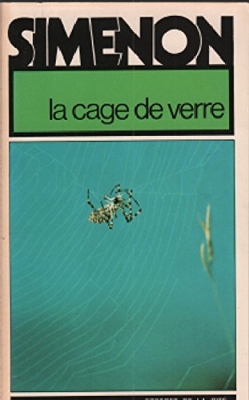
La Cage de verre (1971), translated as The Glass Cage, is a novel by Georges Simenon; it is one of the author's self-described roman durs or "hard novels" to distinguish it from his romans populaires or "popular novels," which are primarily mysteries that usually feature his famous Inspector Maigret character.


















